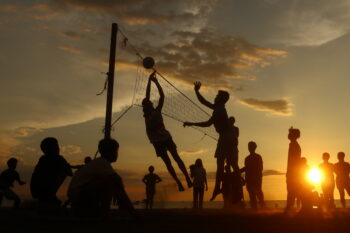ZAMBOANGA CITY (MindaNews / 10 December) — Among Tausug and Sama languages, “dawat” is the term for ink and “kissa” for story. Together, these words imply written story as differentiated from the largely unwritten salsila’ or oral tradition.
Unknown to many, a number of Moro ethnic groups did have written histories.
Though limited in scope, largely around Friday sermons (sing “khutbah”, plural “kutabah”) and official government correspondence, it showcases the beginning of the written narrative. Unfortunately, many were written on ordinary paper, and over time, many were lost to forces of nature.
If there was Moro writing, how was it written?
Like many non-Arab communities that have embraced the Islamic faith, the writing system took off from the Arabic orthography and modified to address peculiarities in the local language. In Islamic Spain, this writing system was called Aljamiado. The Swahili language in Africa was originally Arabic-based scripts. The Muslim Chinese, especially the Hui people used the so-called Xiao’erjing system. Urdu and Farsi are written in modified Arabic scripts. The Muslims of Sri Lanka use Arwi. Hanifi is the Arabic-derived writing system used by the Rohingyas of Myanmar.
In South East Asia, including the Moros of the Philippines and the Champa people of Cambodia and southern Vietnam, this led to the birth of the Jawi System. While Jawi is still prominent in Indonesia, Brunei and Malaysia thanks in part to government sponsorship; this is not the case of the Jawi System among the Moros of the Philippines. While the daily oral usage of indigenous languages is high, the same can not be said of its written form. This is partly because the government’s bilingual policy favors English and the national language, Filipino.
While the Mother Tongue-Based Multi-Lingual Education (MTB-MLE) promotes local language to help children transition in school, in oral and written formats, the written format is in Roman alphabet, not anymore the indigenous Arabic-based Jawi letters.
Even among the religious sector, the original Arabic is favored over Jawi. Jawi, as it stands today in Bangsamoro, like many orphans and widows of war, is in dire need of attention and support.
Either in oral or written form, in Roman or Jawi scripts, behind every language is a set of narratives, colloquially, stories of live and living, of birth and death, of men ad women; of land, people and way of life; of views and perspectives; of action, interaction, reaction and counteraction; of peace and war; of schism and conciliation. The lexicon, or the collection of words, represents the set of ideas that defines its people.
This column “Kissa and Dawat” is a personal or one-person attempt to contribute to the continuing story-telling tradition of the Moro people. Telling stories in pen: of the world they used to live in, of the world they are struggling with now, and of the world they are envisioning to have in the future, for their children and children’s children, a world where being a Moro is a strength, a source of pride and a positive contributor to peace and prosperity in this part of the world. Let the kissa in dawat begin! (MindaViews is the opinion section of MindaNews. Noor Saada is a Tausug of mixed ancestry – born in Jolo, Sulu, grew up in Tawi-tawi, studied in Zamboanga and worked in Davao, Makati and Cotabato. He is a development worker and peace advocate, former Assistant Regional Secretary of the Department of Education in the Autonomous Region in Muslim Mindanao, currently working as an independent consultant and is a member of an insider-mediation group that aims to promote intra-Moro dialogue).







